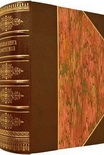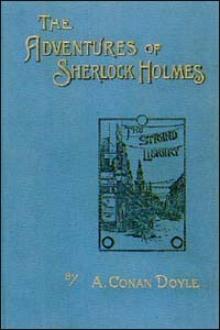My Autobiography, Charles Chaplin [books to read in your 20s .TXT] 📗

- Author: Charles Chaplin
Book online «My Autobiography, Charles Chaplin [books to read in your 20s .TXT] 📗». Author Charles Chaplin
In this virgin land, and the new medium of movies, still striving to discover its rules (largely under the lead of the great D. W. Griffith, whom Chaplin somewhat patronizingly credits with ‘an original touch’), Chaplin finds his destiny. The chapters on his first contracts with the Keystone and Essanay Companies give a vivid if cursory account of his struggles – personal and economic – to win creative autonomy, to bring to the coarse popular show of slapstick movies the subtler skills he had developed in the music halls, and to ‘add another dimension to my films besides that of comedy’.
His success in this and the speed of it were breathtaking. In little more than two years he had achieved world fame, opened up new markets for Hollywood films, and begun to attract the cachet of ‘artist’ from people who before him would never have deigned to look at the movies. ‘The prospects were dazzling. Like an avalanche, money and success came with increasing momentum; it was all bewildering, frightening, but wonderful.’
At this juncture, the eleventh chapter of My Autobiography closes with the words: ‘So much had happened to me, my emotions were spent.’ After this, the style and tone change, in a way that disconcerted and disappointed the book’s first critics and readers. Till now, we have followed the adventures of a young man, struggling, striving, experimenting and finally rocketed to success by his talents. Now we are presented with the self-portrait of a world celebrity, contentedly courted by princes and presidents. When Chaplin drops names he does it resoundingly: ‘Many illustrious visitors came to the studio at this time: Melba, Leopold Godowsky and Paderewski, Nijinsky and Pavlova.’ ‘A cousin of the Kaiser kindly conducted me around Potsdam and Sans Souci.’ ‘If we were not so preoccupied with our family, we could have quite a social life in Switzerland, for we live relatively near the Queen of Spain and the Count and the Countess Chevreau d’Antraigues, who have been most cordial to us, and there are a number of film stars and writers who live near.’
The name-dropping is compensated by Chaplin’s sharp one-line portraits. Paderewski ‘had great charm, but there was something bourgeois about him, an over-emphasis of dignity’. Rachmaninov was ‘a strange-looking man, with something aesthetic and cloistral about him’. Schoenberg was ‘a frank and abrupt little man’. Often, too, Chaplin is as shrewd about himself, humorously deriding and deflating his own vanities, aware of their deep roots in the ineradicable heritage of early deprivation and sense of inferiority. Discussing his passion for self-education, he reveals movingly, ‘I wanted to know, not for the love of knowledge but as a defence against the world’s contempt for the ignorant.’
As it was, Chaplin’s career was still to suffer a further turn of destiny. His seemingly impregnable position as a world celebrity and universal idol was undermined by American paranoia of the Cold War era. At the start of the 1950s he came to feel ‘that I had the acrimony and hate of a whole nation upon me… My prodigious sin was being a non-conformist. Although I am not a Communist, I refused to fall in line by hating them’. His punishment was virtual exile from the United States that lasted to the end of his life.
A more understandable source of disappointment for some critics of the time was the odd reticences of My Autobiography. Chaplin’s references to his films are generally cursory, and some key works – Easy Street or The Circus – are not mentioned at all. He says nothing about the process of their making. In his lifetime he would explain his reluctance to allow people on his set or to share his working secrets by saying, ‘If people know how it’s done, all the magic goes.’ Perhaps a truer reason was that he himself came more and more to feel that he was unable to unveil the mysteries of his creation, simply because the essential part of the mysteries remained veiled for him also. How could he ever explain, to himself or to anyone else, the seemingly accidental creation, in the Keystone costume hut one afternoon in 1914, of the character that was to become the most universally recognized representation of a human being in the history of art? At one of the rare moments when he admits the problems of work, describing how the early shorts were often begun with not even the vaguest idea of a story, he has a simple but revealing phrase: ‘In this desperate way I started many a comedy.’
Another explanation may be that Chaplin wrote the book in the spirit of the entertainer that, throughout his life, he was; and like most people, saw no particular glamour in his daytime job: he once told someone that his working life was no more exciting than that of a bank clerk, and probably felt that it would simply be boring to relate the slow and painful processes by which his films were made. In any case the reticence of his lifetime has been richly compensated since his death. Chaplin, intentionally or not, left behind more evidence, in the form of film out-takes and rushes, working notes and studio daily records, than any other film director of his time, to enable researchers to supply, more than amply, the lacunae of his own account.
More puzzling is his selectivity in the record of his friends, collaborators and more intimate relationships. The four decades since he wrote have accustomed us to the tell-all





Comments (0)